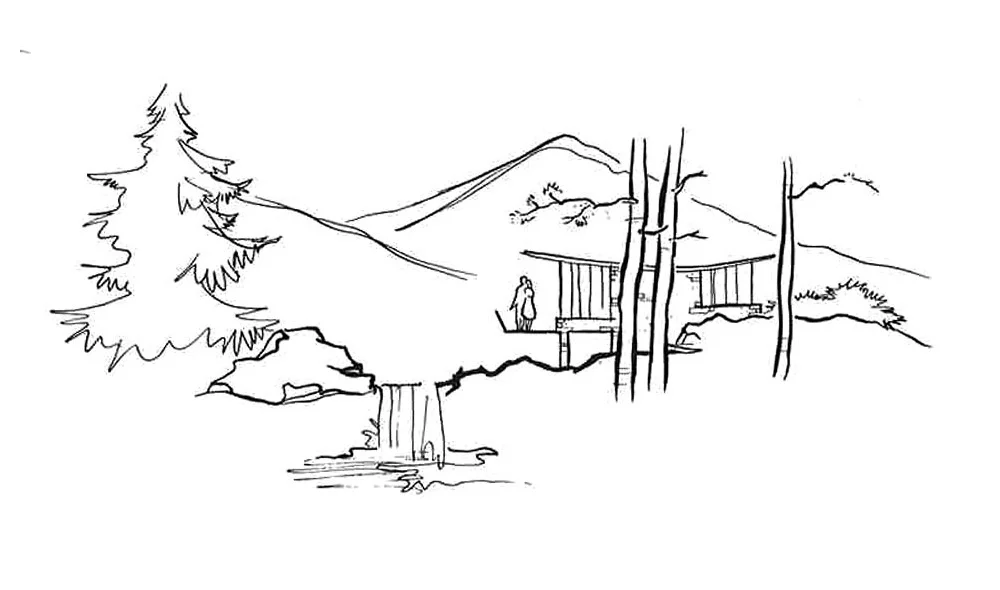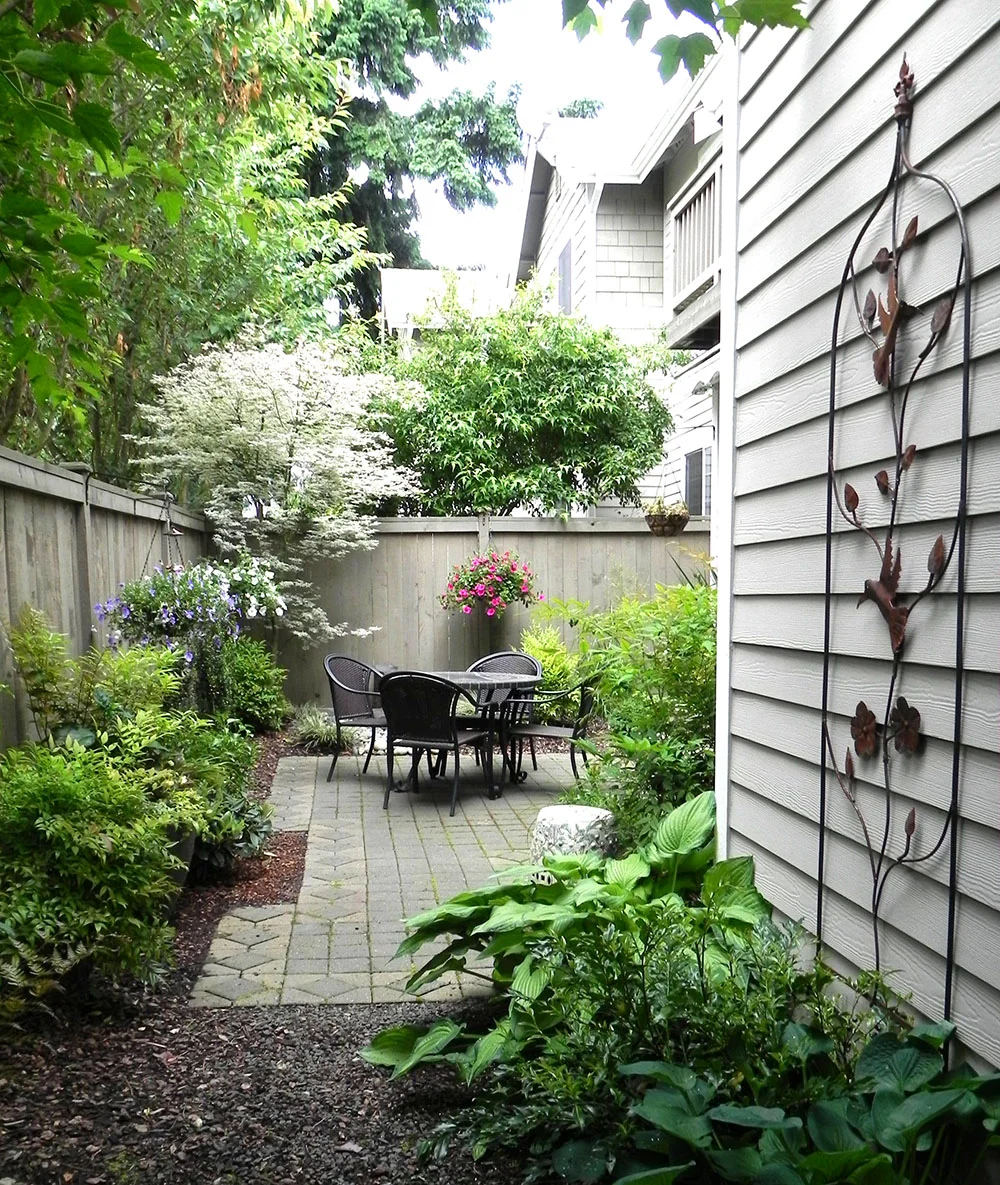Are you ready to create your own design for your garden or landscape? Professional designers often tout the importance of doing a site analysis — taking a detailed look at your site to gain a deep understanding of its positive and negative features, potential impacts and outcomes before starting to make design decisions.
I discussed site analysis in Garden Design 101, and would like to re-emphasize its importance with a story.
In college (long, long ago and far, far away), one of my textbooks was Landscape Architecture: The Shaping of Man’s Natural Environment by John Ormsbee Simonds, a creative, comprehensive, beautifully illustrated introduction to the profession. Simonds was an original modernist landscape architect and one of the most influential and well-known of his time. I still have my dog-eared, water-stained copy of the book, in first-edition black and white.
In his chapter on Site Analysis, Simonds relates the following story from his study abroad in Japan. The architect he interviews shares his process of analyzing a site for a house and garden, but this is not a dry listing data and measurements. It is poetry. There is a quest for beauty and emotional connection throughout the project. I reread this story often, and hope you might find inspiration from it, as well.
Site observation notes from Landscape Architecture: The Shaping of Man’s Natural Environment by John Ormsbee Simonds.
The writing, first published in 1961, is still timely. The methods, technology and even focus of landscape architecture have changed over the decades, but not its basic principles, nor the consequences of careless design. Listen:
In our present power-happy and schedule-conscious era, this vitally important aspect of developing a simpatico feeling for the land and the total project site is too often overlooked. And too often our completed work gives tragic evidence of our haste and neglect.
In Japan, historically, this keen awareness of the site has been of great significance in landscape planning. Each structure has seemed a natural outgrowth of its site, preserving and accentuating its best features.
Studying in Japan, the author was struck by this consistent quality and once asked an architect how he achieved it in his work. “Quite simply,” said the architect. “If designing, say, a residence, I go each day to the piece of land on which it is to be constructed. Sometimes for long hours with a mat and tea. Sometimes in the quiet of evening when the shadows are long. Sometimes in the busy part of the day when the streets are abustle and the sun is clear and bright. Sometimes in the snow and even in the rain, for much can be learned of a piece of ground by watching the rainfall play across it and the runoff take its course in rivulets along the natural drainageways.
Getting to "know the land" is invaluable toward creating a sensitive, seamless design. (image from Pinterest)
“I go to the land, and stay, until I have come to know it. I learn to know its bad features—the jangling friction of the passing street, the awkward angles of a windblown pine, an unpleasant sector of the mountain view, the lack of moisture in the soil, the nearness of a neighbor’s house to an angle of the property.
“I learn to know its good features—a glorious clump of maple trees, a broad ledge perching high in space above a gushing waterfall that spills into the deep ravine below. I come to know the cool and pleasant summer airs that rise from the falls and move across an open draw of the land. I sense perhaps the deliciously pungent fragrance of the deeply layered cedar fronds as the warm sun plays across them. This patch I know must be left undisturbed.
“I know where the sun will appear in the early morning, when its warmth will be most welcome. I have learned which areas will be struck by its harshly blinding light as it burns hot and penetrating in the late afternoon, and from which spots the sunset seems to glow the richest in the dusky peace of evening. I have marveled at the changing dappled light and soft, fresh colors of the bamboo thicket and watched for hours the lemon-crested warblers that have built their nests and feed there.
“I come to sense with great pleasure the subtle relationship of a jutting granite boulder to the jutting granite profile of the mountainside across the way. Little things, one may think, but they tell one, ‘Here is the essence of this fragment of land; here is its very spirit. Preserve this spirit, and it will pervade your gardens, your home, and your every day.’
“And so I come to understand this bit of land, its moods, its limitations, its possibilities. Only now can I take my ink and brush in hand and start to draw my plans. But in my mind the structure by now is fully visualized. It has taken its form and character from the site and the passing street and the fragment of rock and the wafting breeze and the arching sun and the sound of the falls and the distant view.
“Knowing the owner and his family and the things they like, I have found for them here a living environment that brings them into the best relationship with the landscape that surrounds them. This structure, this house that I have conceived, is no more than an arrangement of spaces, open and closed, accommodating and expressing in stone, timber, tile, and rice paper a delightful, fulfilling way of life. How else can one come to design the best home for this site?”
There can be no other way! This, in Japan as elsewhere, is in simplest terms the planning process—for the home, the community, the city, the highway, or the national park.
The Moral: In our world of hurry, competition, deadlines, and instant gratification, it's worth taking the time to observe as much as you can about your garden site before digging in.
I know, your property might not be as large and diverse as in this story with "a broad ledge perching high in space above a gushing waterfall." But even with a postage-stamp lot (or an 8 x 12' balcony), the same principles can apply. In fact, these are good principles for any building project.
Even a small space design can benefit from a thoughtful site analysis. (image from Pinterest)
Consider each cardinal direction, overhead, underground, in all weather conditions and every season. Where does the water come from and where does it go? The wind? The sunlight in each season? Consider the dimension of time — the history of your site, and try to anticipate its future changes.
What does your site want? And, if you can ask or imagine, what do you want — along with everyone else who sees or uses your site? There are multiple site factors to examine and being patient with them will almost certainly give you a better design result. And remember that no garden is static — it will age and change over time. Try to anticipate that, and expect that some future alterations will be necessary.
You might generate a lot more questions than answers, and finding who can answer those is important. We at Swansons can help with a lot of garden and landscape questions, of course!
May your design help you toward a delightful, fulfilling way of life on your piece of Earth.







